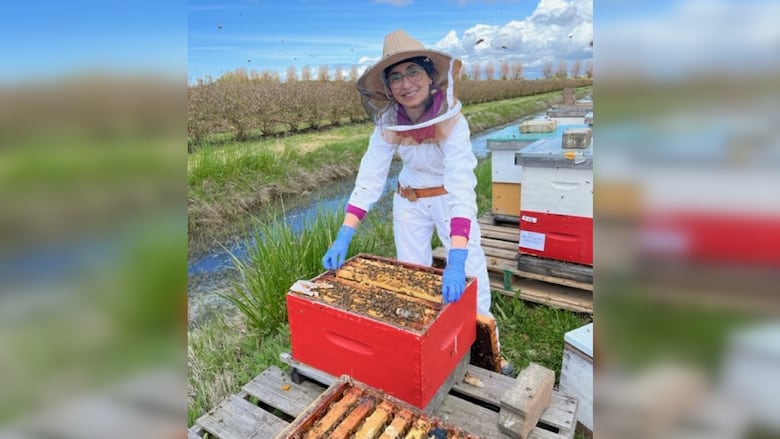Latest research into bee mortality in B.C.'s Peace region focused on parasitic mite reduction
Over 30 per cent of honeybee colonies were killed by viruses

A group of Canadian scientists is looking for solutions to save honeybees from a parasitic mite that is undermining their survival in northeastern B.C.'s frequently harsh winter.
In April, the B.C. Honey Producers' Association received a research grant of $27,880 from the B.C. Hydro Peace Agricultural Compensation Fund, approved by the Northern Development Initiative Trust to monitor "varroa destructor" mites and determine how many mites a bee can tolerate.
The association, in co-operation with B.C.'s Ministry of Agriculture, the University of British Columbia (UBC) and the University of Guelph in Ontario, submitted its research proposal in January.
Next March, it expects to complete the research as part of a larger project funded by the ministry that also monitors bees in the Cariboo, Okanagan, Kootenay and Fraser Valley regions.
The varroa mite feeds on bees' bodily fluid and spreads viruses that can cause the insects to grow deformed wings or become too weak to survive extremely low temperatures. The association says the mite is the leading cause of honeybee death during the Canadian winter.
Bee mortality has a significant impact on the ecosystem
The association's researcher, Nuria Morfin, says the 30 viruses identified so far have killed more than 30 per cent of bee colonies — each of which can consist of 40,000 to 50,000 bees during the summer — over the past few years, compared to less than 20 per cent before.
Morfin, who is also an adjunct professor with UBC, says increased bee mortality has a significant impact on the environment.
"They are a great pollinator for wild plants … but they are also good at keeping agro-ecosystems," she told Bill Fee, a guest host of CBC's Daybreak North.
"There's a big impact [from] honeybees on [the] pollination of crops in the Peace region."
Morfin says there are 27 beekeepers participating in the provincewide project to monitor more than 150 bee colonies.
The association's other researcher Kerry Clark, a hobby beekeeper raising five bee colonies, says it's important to identify the threshold number of mites that would warrant medical intervention because overdoing the medication could create adverse effects for the bees.
"You cannot use it all the time because the mites may develop resistance," he said. "We have to be careful about how we manage these colonies and when we might want to put on a treatment to reduce the mites."

Subscribe to Daybreak North on CBC Listen or your favourite podcast app, and connect with CBC Northern British Columbia on Facebook, Twitter and Instagram.
With files from Daybreak North

